Easy Guide to Planting Morning Glory Seeds: From Sowing to Blooming
- February 27, 2024
- 0 comment
Learn to plant morning glory seeds with our easy guide, from sowing to full bloom. Achieve vibrant flowers in your garden. Morning glories, with their twining vines and vibrant trumpet-shaped flowers, are a delightful addition to any garden. Originating from various parts of the world, they bring a touch of exotic beauty to your outdoor space.

These flowers are not just about aesthetics. They attract pollinators, provide natural shade, and are relatively easy to grow, making them an excellent choice for both novice and experienced gardeners.
List on How To Plant Morning Glory Seeds
- Preparing to Plant
- Selecting the Best Morning Glory Seeds
- The Planting Process.
- Caring for Your Morning Glories
- Enjoying Your Morning Glories
Preparing to Plant
Choosing the Right Location
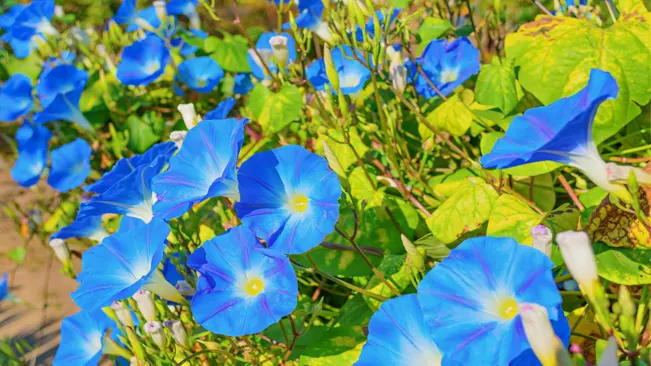
Morning glories thrive in sunny spots. They require a minimum of 6 hours of direct sunlight daily. Select a location that meets these criteria for optimal growth.
- Sunlight Requirements: Morning glories are sun-loving plants that need full sun to flourish. A spot that receives at least 6 hours of direct sunlight daily is ideal. This ample sun exposure is essential for the plants to produce their vibrant flowers and healthy foliage. If you plant them in a location with too much shade, you might notice stunted growth and fewer blooms.
- Protection from Wind: While they need plenty of sun, morning glories also benefit from protection against strong winds. A location that is somewhat sheltered will prevent damage to their delicate vines and leaves. Consider planting them near a fence, wall, or trellis that can provide support and some wind protection.
- Space for Growth: Morning glories are climbers, so it’s important to choose a location where they have room to spread and climb. They can grow quite tall and wide, so ensure the spot you choose has ample space for their vines to expand without overcrowding other plants.
- Soil Quality: These plants are not overly picky about soil, but they do best in well-draining soil. Avoid areas where water tends to pool after rain, as this can lead to root rot. If your garden soil is heavy or clay-like, consider amending it with compost or planting in raised beds to improve drainage.
- Climbing Support: Since morning glories are vining plants, they’ll need something to climb on. Choose a location near a trellis, fence, or other structure that they can latch onto as they grow. This not only supports their growth but also showcases their beauty as they climb and spread.
- Accessibility for Maintenance: Lastly, make sure you can easily access the location for regular maintenance tasks like watering, pruning, and checking for pests or diseases. While morning glories are relatively low-maintenance, easy access will help you keep them healthy and thriving.
Understanding Soil Requirements
These plants prefer well-draining soil. They can tolerate a variety of soil types, but thrive in a slightly acidic to neutral pH range.
- Well-Draining Soil: Morning glories thrive in well-draining soil, which means the soil should allow water to percolate through it rather efficiently. This prevents water from pooling around the roots, which can lead to root rot, a common problem in many plants. If your soil is heavy or clayey, you can improve its drainage by mixing in sand, compost, or organic matter.
- Soil Types: While morning glories are adaptable to a range of soil types, they perform best in loamy soil. Loam is a balanced mixture of sand, silt, and clay, offering an ideal environment for most plants due to its nutrient-rich composition and excellent drainage capabilities. However, even if your garden doesn’t have loamy soil, morning glories can still flourish as long as the drainage is adequate.
- pH Range: The pH level of the soil indicates its acidity or alkalinity. Morning glories prefer a slightly acidic to neutral pH range, typically between 6.0 and 7.0. This pH range is conducive to the availability of essential nutrients in the soil. If you’re unsure about your soil’s pH, you can easily test it with a pH testing kit available at most garden centers. If the soil is too acidic or too alkaline, you can adjust it. Adding lime can decrease acidity, while sulfur can increase acidity.
- Nutrient Content: While morning glories aren’t heavy feeders, they do appreciate soil that is moderately fertile. Incorporating organic matter such as compost or well-rotted manure can enhance the soil’s fertility, providing the necessary nutrients for the plants to grow vigorously and bloom profusely.
Preparing the Soil
Ensure the soil is loose and aerated. If necessary, amend it with organic matter to improve drainage and nutrient content.
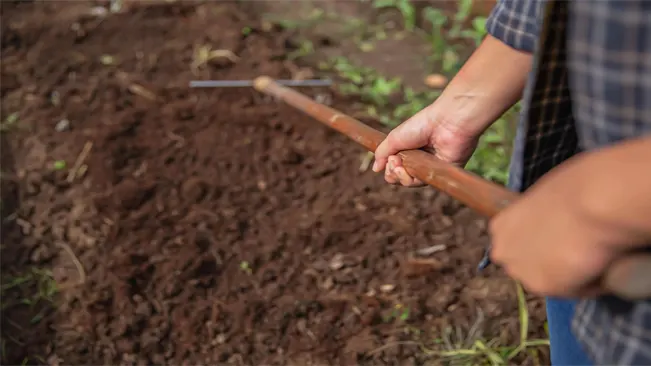
- Loosening the Soil: Start by loosening the soil to a depth of about 8-12 inches. This can be done using a garden fork or a tiller. Loosening the soil is important because it allows the roots of the morning glories to penetrate deeply and easily, facilitating better access to nutrients and water.
- Aeration: Aerating the soil is vital for healthy plant growth. It ensures that air circulates adequately around the soil particles, which is essential for root respiration and the prevention of fungal diseases. Aerated soil also allows water to penetrate more effectively, preventing waterlogging.
- Amending with Organic Matter: Adding organic matter, such as compost, well-rotted manure, or leaf mold, can significantly improve the quality of the soil. Organic matter enhances soil structure, drainage, and aeration, and provides a slow-release source of nutrients to the plants. Incorporate the organic matter into the loosened soil by mixing it evenly.
- Improving Drainage: Morning glories prefer well-draining soil, so if you have heavy clay soil, consider adding sand or perlite to improve drainage. This helps prevent water from pooling around the roots, which could lead to root rot.
- Balancing Soil pH: Morning glories thrive in a slightly acidic to neutral pH range (pH 6.0 to 7.0). If your soil is too acidic or too alkaline, you can amend it accordingly. Lime can be added to increase the pH (make it more alkaline), while sulfur or peat moss can be used to lower the pH (make it more acidic).
- Nutrient Content: While morning glories are not heavy feeders, starting with nutrient-rich soil can promote healthier growth. A balanced, slow-release fertilizer can be mixed into the soil at the time of planting. However, be cautious not to over-fertilize, as this can lead to lush foliage at the expense of flowers.
Selecting the Best Morning Glory Seeds
Varieties of Morning Glory Seeds
- There are numerous varieties of morning glory seeds available, each with its unique color and pattern. Choose a variety that complements your garden’s theme.
Ipomoea tricolor ‘Heavenly Blue’
- This is perhaps the most famous variety, renowned for its vivid sky-blue flowers with white throats. It’s a classic choice for a burst of cool color in the garden.

Ipomoea purpurea ‘Star of Yelta’
- This variety showcases deep, rich purple flowers with a striking star-shaped pattern in the center. It’s perfect for adding a touch of drama and depth.
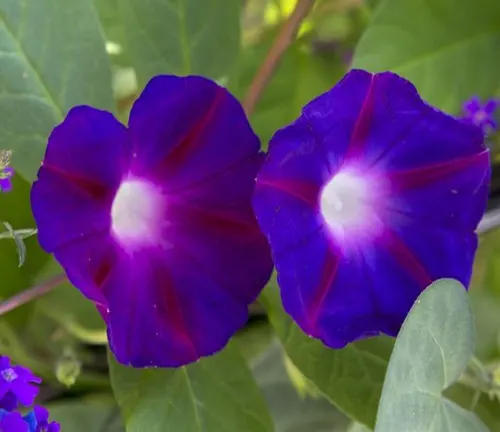
Ipomoea nil ‘Scarlett O’Hara’
- With its bright red flowers and white throats, this variety adds a warm, vibrant touch. It’s great for creating a bold, eye-catching display.
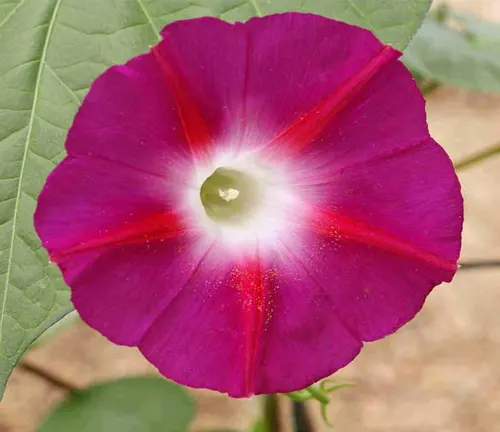
Ipomoea alba (Moonflower)
- Unlike the typical morning glory, the moonflower opens in the evening and stays open until the sun rises. It has large, white, fragrant flowers and is ideal for night gardens.
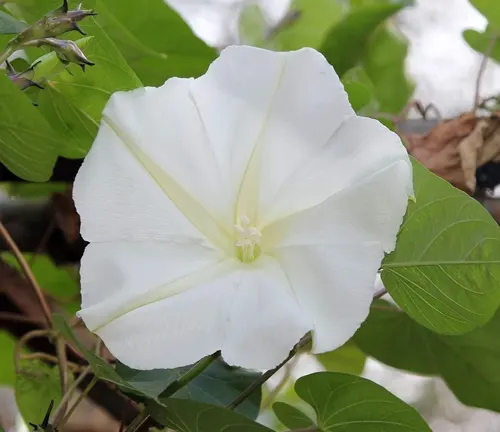
Ipomoea tricolor ‘Flying Saucers’
- This variety is known for its unique pattern – white flowers streaked with blue. The marbled effect is quite mesmerizing and adds a whimsical touch.
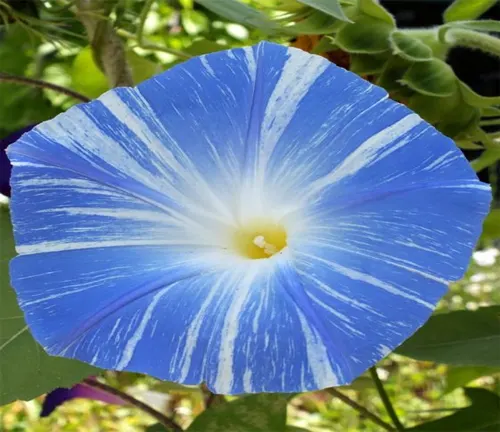
Ipomoea quamoclit (Cypress Vine)
- This is a different species with very finely cut leaves and small, star-shaped red flowers. It’s excellent for a more delicate, lace-like appearance.
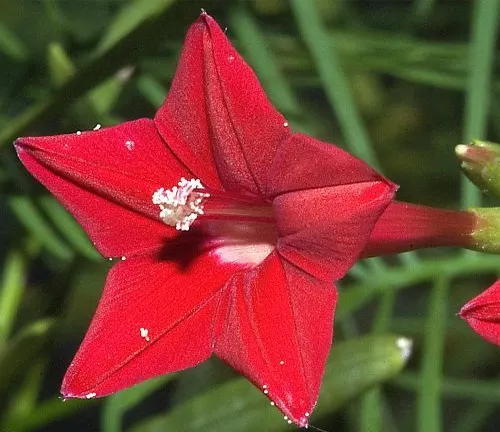
Ipomoea purpurea ‘Grandpa Ott’s’
- This heirloom variety features deep purple flowers with a red star in the throat. It’s known for its vigorous growth and traditional charm.
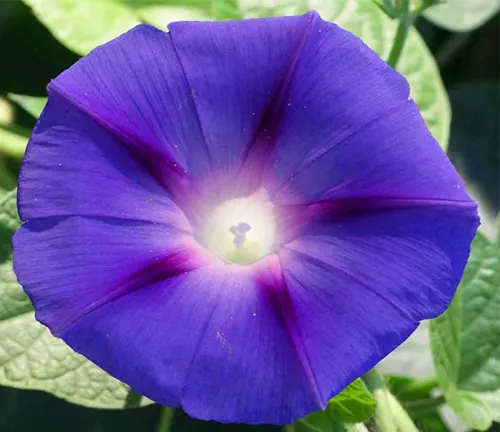
Ipomoea tricolor ‘Pearly Gates’
- A stunning variety with large, pure white blooms. It offers a serene and peaceful look, perfect for creating a tranquil garden space.
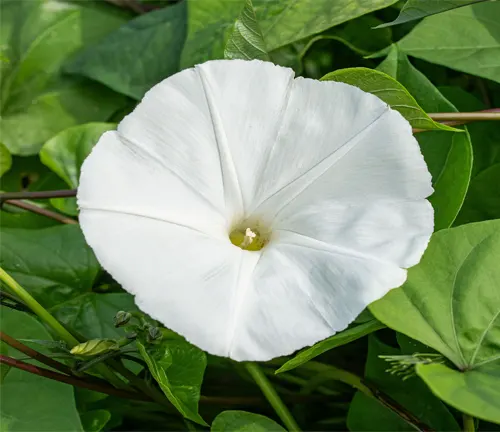
Ipomoea nil ‘Kikyo-zaki’
- This Japanese variety has star-shaped flowers with a striking contrast of colors, often blue with a white edge. It’s perfect for a more exotic and unique display.
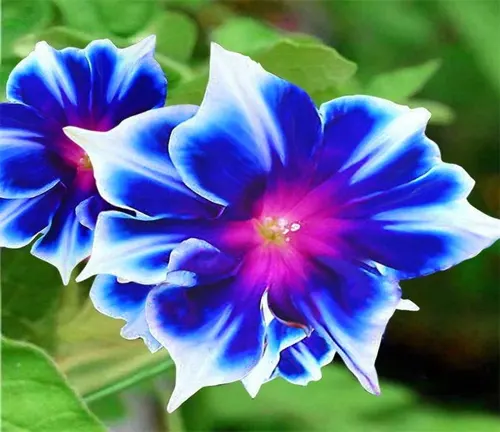
Where to Buy Quality Seeds
Purchase seeds from reputable nurseries or online stores. High-quality seeds ensure better germination rates and healthier plants.
- Local Garden Centers and Nurseries: These are often the best places to start. Local nurseries typically offer a selection of seeds that are suitable for your region’s climate and soil conditions. Staff at these centers can also provide valuable advice on how to grow morning glories in your specific area.
- Online Specialty Seed Retailers: There are many online stores specializing in flower seeds, including morning glories. These retailers often offer a wider variety of species and hybrids than local stores. Websites like Burpee, Park Seed, and Johnny’s Selected Seeds are known for their extensive collections and high germination rates.
- Seed Exchange Forums and Communities: Gardening forums and social media groups are great places to find unique or heirloom morning glory seeds. Members of these communities often share or trade seeds, providing access to varieties that may not be available commercially.
- Home Improvement Stores: Larger chains like Home Depot or Lowe’s also carry a selection of seeds, including morning glories. While the variety might be more limited compared to specialty stores, they often stock seeds that are well-suited to a wide range of environments.
- Farmers’ Markets: Sometimes local farmers and gardeners sell their own harvested seeds at farmers’ markets. These seeds are often well-adapted to the local climate and can be a great choice for your garden.
The Planting Process
Step-by-Step Guide to Planting
Soak the Seeds Overnight
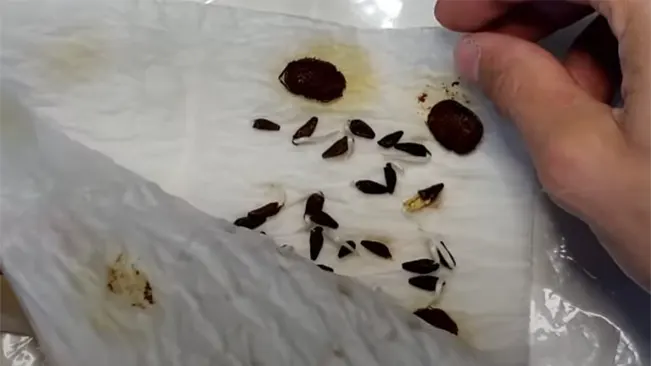
- Morning glory seeds have a hard outer shell, which can impede water absorption, a crucial step for germination. To overcome this, soak the seeds in water for about 24 hours before planting. This softens the shell, allowing moisture to penetrate and activate the seed’s internal processes that trigger germination.
Planting Depth

- After soaking, plant the seeds in soil. The ideal depth is about ¼ inch. This shallow planting ensures that the seeds aren’t too deep to prevent sprouting but are covered enough to retain moisture and protect them from birds or other elements. A rule of thumb is to plant seeds at a depth approximately three times their diameter.
Spacing the Seeds
- Space the seeds or seedlings about 6 inches apart. Proper spacing is vital for several reasons. Firstly, it ensures that each plant has enough room to grow without competing for nutrients, water, or sunlight. Secondly, adequate spacing allows for good air circulation, which is important in preventing fungal diseases. Lastly, as morning glories are climbers, they will need some space to spread their vines without overcrowding.
When to Plant
- The timing for planting morning glory seeds is crucial for their successful germination and growth. The ideal time is after the last frost of the season, typically in late spring or early summer, depending on your geographical location. This is important because morning glories are warm-weather plants, and their seeds require a certain level of warmth in the soil to germinate effectively. Planting them too early, when there’s still a risk of frost, can damage the seeds or hinder their growth. Therefore, monitoring your local weather patterns and waiting until you’re confident that the frosty period is over is key. Additionally, the soil temperature should be at least 64°F (18°C) for the best germination results.
How to Plant
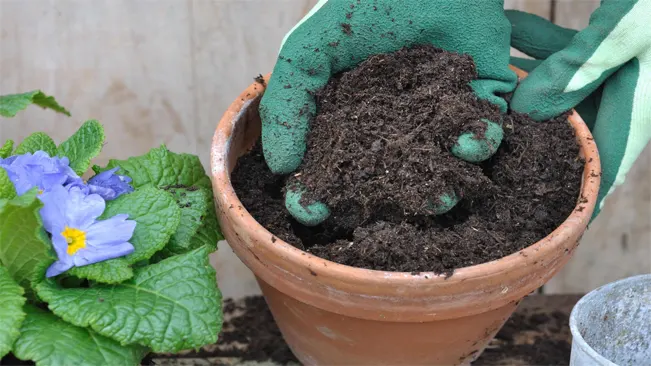
- Soil Preparation: Before planting, it’s essential to prepare the soil bed. Morning glories thrive in well-draining soil. You should loosen the soil to a depth of about 8-10 inches and mix in compost or a balanced fertilizer to enrich it. This provides the seeds with a nutrient-rich environment to start in.
- Planting Depth and Spacing: Plant the seeds about ¼ inch deep into the soil. This shallow planting helps them receive the necessary warmth and light for germination. Space the seeds or seedlings about 6-12 inches apart. Proper spacing is crucial as it allows each plant enough room to grow and reduces competition for nutrients and light.
- Watering After Planting: After you’ve planted the seeds, water the soil lightly. The goal is to moisten the soil without making it soggy, as too much water can cause the seeds to rot. Consistent moisture is key in the early stages of growth, so keep the soil evenly moist (but not waterlogged) until germination, which typically occurs within a week or two.
- Support Structures: As climbers, morning glories will need support to grow upwards. Consider placing trellises, stakes, or a fence near the planting site for the vines to climb as they grow.
- Monitoring Growth: After the seeds germinate and the plants start growing, keep an eye on their progress. They might need additional watering during dry spells, and you may have to guide them gently onto their supports as they begin to vine.
Caring for Your Morning Glories
Watering Morning Glories
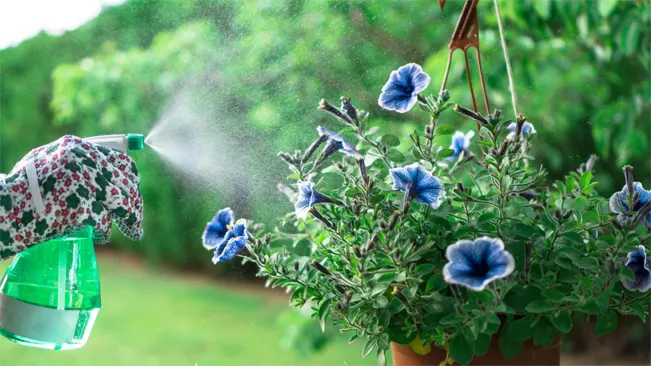
- Regular Watering: Morning glories need consistent moisture, especially during their growing and blooming phase. The key is to maintain a balance – the soil should be moist but not waterlogged.
- Deep Watering: Instead of shallow, frequent watering, opt for deeper, less frequent watering. This encourages the roots to grow deeper, making the plants more drought-resistant.
- Dry Periods: Pay extra attention during hot, dry spells. Morning glories may require more frequent watering to prevent wilting.
- Checking Soil Moisture: Before watering, check the soil moisture. If the top inch of the soil is dry, it’s time to water.
Feeding Morning Glories
- Low Fertilizer Needs: Morning glories are not heavy feeders. Over-fertilizing can lead to lush foliage at the expense of flowers.
- Type of Fertilizer: Use a balanced, all-purpose fertilizer (like a 10-10-10 NPK ratio). Liquid or granular forms are both effective.
- Frequency of Feeding: Fertilizing once a month during the growing season is typically sufficient. Avoid feeding late in the season as this can reduce flowering.
- Organic Options: If you prefer organic gardening, compost or well-rotted manure are great alternatives to synthetic fertilizers. They provide a slow-release source of nutrients
Pruning and Maintenance
Pruning Techniques
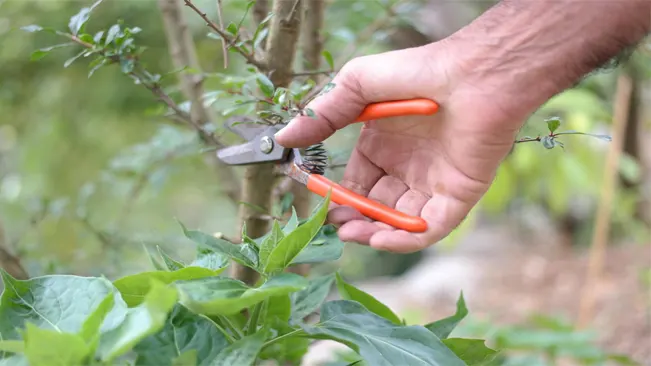
- Regular Trimming: Morning glories can grow quite vigorously, so regular pruning helps control their spread and directs energy towards flower production.
- Deadheading: This involves removing spent flowers. By deadheading, you encourage the plant to produce more blooms.
- Shaping: If your morning glories are growing in a specific area or structure, like a trellis or fence, you might need to guide and shape their growth by tying or gently directing the vines.
Maintenance Tips
- Check for Pests: Regularly inspect the vines for signs of pests like aphids or spider mites. Early detection and treatment can prevent larger infestations.
- Disease Prevention: Keep an eye out for signs of disease, such as discolored leaves or unusual spots. Good air circulation and avoiding overly damp conditions can help prevent fungal diseases.
- Nutrient Management: Although morning glories aren’t heavy feeders, an occasional balanced fertilizer can promote healthier growth and flowering. Over-fertilizing can lead to more foliage and fewer flowers.
- Watering: While they need regular watering, it’s important to avoid waterlogging. Ensure the soil drains well.
Dealing with Pests and Diseases
Common Pests and Diseases
Aphids
- These small, sap-sucking insects can cluster on the undersides of leaves or stems. They can cause leaf curling and stunted growth. A strong spray of water or the use of insecticidal soap can control aphids.

Spider Mites
- Tiny and hard to see, spider mites can cause yellowing or speckled leaves. They thrive in dry conditions, so increasing humidity and using miticides can help.
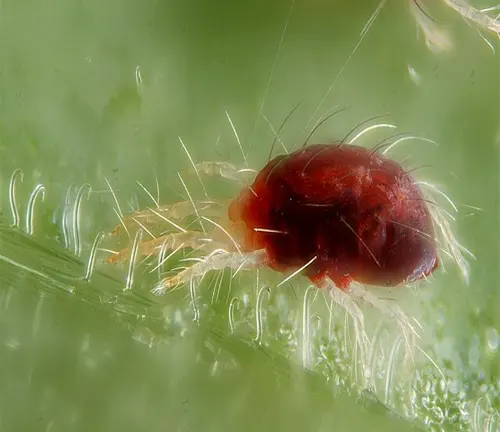
Rust
- This fungal disease causes orange or yellow spots on the leaves. Reducing leaf wetness by watering at the base of the plant and using fungicides can manage rust.
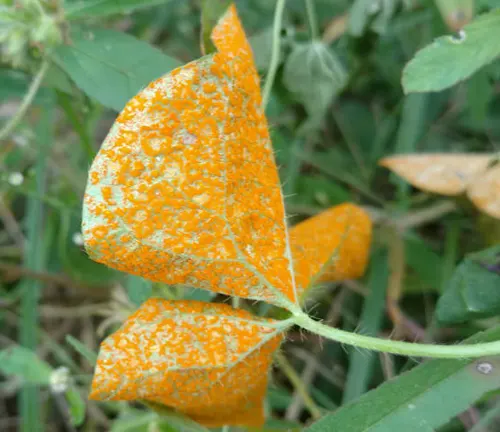
Leaf Miners
- These are larvae of insects that tunnel inside leaves, leaving visible trails. Removing affected leaves can prevent their spread.
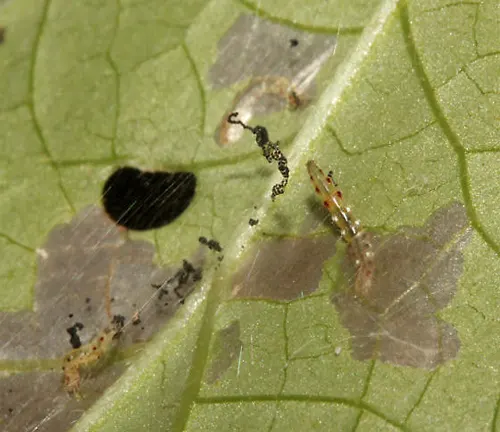
Preventative Measures
- Regular Inspection: Regularly check your plants for early signs of infestation or disease. Catching problems early can make treatment more effective.
- Proper Watering: Over-watering can lead to fungal diseases, while under-watering stresses the plant, making it more susceptible to pests. Ensure a balance in watering.
- Good Air Circulation: Proper spacing between plants can improve air circulation, reducing the risk of fungal diseases.
- Cleanliness: Keep the area around the plants free of debris and fallen leaves, as these can harbor pests and disease.
Treatment Options
- Organic Remedies: Neem oil, insecticidal soaps, and homemade solutions like a mixture of water and mild soap can be effective against pests without harming beneficial insects.
- Chemical Pesticides and Fungicides: In cases of severe infestation or disease, chemical treatments may be necessary. Always follow the instructions carefully and choose products that are safe for use on morning glories.
- Natural Predators: Encouraging beneficial insects, such as ladybugs and lacewings, can help control aphid populations naturally.
Enjoying Your Morning Glories
The Blooming Period

- Morning glories bloom from early summer to the first frost, with each flower lasting just a day but the plant continuously producing new buds. They open in the morning and close by afternoon, creating a daily display of vibrant colors like blues, purples, pinks, and whites. The blooming period varies by climate and variety; in warmer areas, they may bloom longer. These plants prefer sunny locations and require regular care for a prolonged flowering season.
Uses and Benefits of Morning Glories
Natural Privacy Screens
- The rapid growth and dense foliage of morning glories make them excellent natural screens. When grown on fences, trellises, or arbors, they can create a lush, living barrier that enhances privacy in your garden or patio area.
Heat Reduction
- The extensive coverage provided by morning glory vines can significantly reduce heat. By planting them in areas exposed to direct sunlight, such as near windows or on pergolas, they can help in cooling down the surrounding space, creating a more comfortable outdoor environment.
Pollinator Attraction
- Morning glories are known to attract a variety of pollinators, including bees, butterflies, and hummingbirds. This can be particularly beneficial for gardeners looking to boost the health and productivity of their gardens, as these pollinators are essential for the growth of many fruits and vegetables.
Soil Improvement and Erosion Control
- The root systems of these plants can help in improving soil structure and preventing erosion. They can be particularly useful in stabilizing slopes and areas prone to soil erosion, while also contributing to soil health.
Versatility in Landscaping
- Morning glories are incredibly versatile in landscaping. They can be used to cover unsightly structures, add vertical interest to flat areas, or even as ground covers in some settings.
Medicinal Uses
- In some cultures, parts of the morning glory plant have been used for medicinal purposes. However, it’s important to note that some species of morning glory, especially their seeds, can be toxic if ingested.
Education and Experimentation
- For those interested in gardening as a hobby, morning glories can be a great plant for experimentation and learning. Their rapid growth and the ease with which they can be cultivated make them ideal for educational projects or for novice gardeners looking to develop their green thumbs.
Conclusion
Planting morning glory seeds is a simple and rewarding process. Begin by selecting a sunny location with well-draining soil, and prepare the soil by loosening and enriching it. Soak the seeds overnight to facilitate germination, then plant them about a quarter inch deep, ensuring they are spaced adequately. With regular watering and minimal maintenance, you’ll soon enjoy the vibrant blooms of these beautiful climbers.
FAQs (Frequently Asked Questions)
- What is the best time to plant morning glory seeds?
The ideal time to plant morning glory seeds is after the last frost in spring, when the soil has warmed up. - Do morning glory seeds need to be soaked before planting?
Yes, it’s recommended to soak morning glory seeds in water for 24 hours before planting to soften the hard seed coat and promote germination. - How deep should I plant morning glory seeds?
Plant morning glory seeds about a quarter-inch deep in the soil. - How far apart should I space morning glory seeds?
Space the seeds or seedlings about 6 to 12 inches apart to give each plant enough room to grow. - What kind of soil do morning glories prefer?
Morning glories thrive in well-draining soil with a slightly acidic to neutral pH. They are adaptable to various soil types but prefer fertile, loamy soil. - How much sunlight do morning glories need?
Morning glories require full sun, which means they should receive at least 6 hours of direct sunlight each day. - How often should I water morning glory plants?
Water morning glories regularly, keeping the soil consistently moist but not waterlogged, especially during dry spells. - Do morning glories need a support structure to grow?
Yes, morning glories are climbing vines and need a trellis, fence, or another support structure to climb on. - Can morning glories be grown in containers?
Yes, morning glories can be grown in containers as long as they have adequate support for climbing and sufficient space for root growth. - Are morning glory seeds toxic?
Yes, morning glory seeds can be toxic if ingested in large quantities. They contain substances that can cause hallucinations and other adverse effects, so it’s important to keep them out of reach of children and pets.

Kristine Moore
Forestry AuthorI'm Kristine Moore, a seasoned garden landscaping professional with over 30 years of experience. My extensive career has been dedicated to transforming outdoor spaces into stunning, sustainable landscapes. With a deep understanding of horticulture, design principles, and environmental stewardship, I have become a respected figure in the field, known for creating harmonious, visually appealing, and eco-friendly gardens. My commitment to excellence and continuous learning in landscaping trends and techniques has solidified my reputation as an expert in garden design and implementation.













Leave your comment